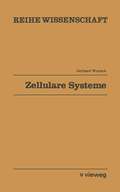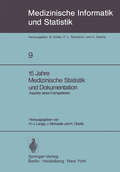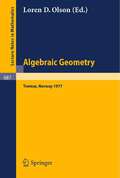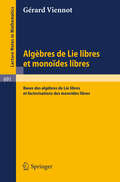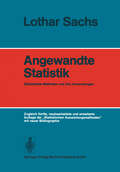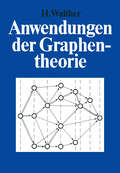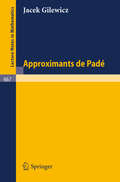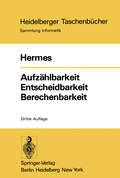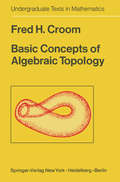- Table View
- List View
Topology and Maps (Mathematical Concepts And Methods In Science And Engineering Ser. #5)
by T. HusainThis work is suitable for undergraduate students as well as advanced students and research workers. It consists of ten chapters, the first six of which are meant for beginners and are therefore suitable for undergraduate students; Chapters VII-X are suitable for advanced students and research workers interested in functional analysis. This book has two special features: First, it contains generalizations of continuous maps on topological spaces, e. g. , almost continuous maps, nearly continuous maps, maps with closed graph, graphically continuous maps, w-continuous maps, and a-continuous maps, etc. and some of their properties. The treatment of these notions appears here, in Chapter VII, for the first time in book form. The second feature consists in some not-so-easily-available nuptial delights that grew out of the marriage of topology and functional analysis; they are topics mainly courted by functional analysts and seldom given in topology books. Specifically, one knows that the set C(X) of all real- or com plex-valued continuous functions on a completely regular space X forms a locally convex topological algebra, a fortiori a topological vector space, in the compact-open topology. A number of theorems are known: For example, C(X) is a Banach space iff X is compact, or C(X) is complete iff X is a kr-space, and so on. Chapters VIII and X include this material, which, to the regret of many interested readers has not previously been available in book form (a recent publication (Weir [\06]) does, however, contain some material of our Chapter X).
Turbulence Seminar: Berkeley 1976 / 77 (Lecture Notes in Mathematics #615)
by A. Chorin J. Marsden S. SmaleVector Fields: Vector Analysis Developed Through Its Application To Engineering And Physics (PDF)
by John A. ShercliffA field is a distribution in space of physical quantities of obvious significance, such as pressure, velocity, or electromagnetic influence. This 1977 book was written for any reader who would not be content with a purely mathematical approach to the handling of fields. In letting the mathematical concepts invent themselves out of the need to describe the physical world quantitatively, Professor Shercliff shows how the same mathematical ideas may be used in a wide range of apparently different contexts including electromagnetism, fluid dynamics, nuclear reactor criticality, plasma oscillations and rotational flow. Mathematical methods are explored only far enough to give the interested reader a glimpse of activities that lie beyond, yet the unifying approach to increasingly powerful, generalised ideas at a level not reached in many books on vector analysis at the time. Special features of the book are a wealth of examples of physical interest, and a thorough appendix.
Versuchsauswertung: Darstellung und Auswertung experimenteller Ergebnisse in Naturwissenschaft und Technik; Für Studenten aller naturwissenschaftlichen und technischen Fachrichtungen
by Ralph H. Leaver T. R. ThomasDie Grundausbildung in den technischen und naturwissenschaftlichen Fächern verlangt vom Studierenden, daß er einen beträchtlichen Teil seiner Zeit im Laboratorium verbringt. Daher ist die experimentelle Methodenlehre ein anerkannter Bestandteil vieler technischer Grundvorlesungen geworden. Die Autoren dieses Buches waren am Teesside Polytechnikum mehrere Jahre mit einer Einführungsvorlesung in die experimentelle Methodenlehre für Studenten der Fachrich tung Maschinenbau befaßt. Dieser Gegenstand war urspriinglich in den Lehrplan aufge nommen worden, um bei praktischen Kursen und bei selbständiger Forschungsarbeit der Studenten eine bessere Darstellung der experimentellen Ergebnisse zu erreichen. Wir dürfen, ohne unbescheiden zu sein, in dieser Hinsicht einigen Erfolg für uns in Anspruch nehmen. Anläßlich dieser Vorlesung wurden wir auf das Fehlen einer für den Studenten zugäng lichen Anleitung zur Analyse und Darstellung experimenteller Daten aufmerksam. Ob wohl viele der Lehrbücher über die Planung und Durchführung von Experimenten von hervorragender Qualität sind, behandeln sie diesen wichtigen Gegenstand meist nur ober flächlich. Die nötige Information wird zwar angeboten, ist aber in Büchern verstreut, die für den Studierenden entweder zu teuer oder zu spezialisiert oder beides sind. Nach unserer Meinung bedurfte es eines Textbuches, das als erstes die wichtigsten und grund legenden Methoden zur Darstellung und Analyse von Datenmaterial in einer für erst semestrige Studenten verständlichen Form bereitstellte.
15 Jahre Medizinische Statistik und Dokumentation: Aspekte eines Fachgebietes (Medizinische Informatik, Biometrie und Epidemiologie #9)
by H. J Lange J. Michaelis K. ÜberlaAlgebraic and Geometric Topology: Proceedings of a Symposium held at Santa Barbara in honor of Raymond L. Wilder, July 25 - 29, 1977 (Lecture Notes in Mathematics #664)
by Kenneth C. MillettAlgebraic Geometry: Proceedings. Tromso Symposium, Norway, June 27 - July8, 1977 (Lecture Notes in Mathematics #687)
by L. D. OlsonAlgebraic Topology: Proceedings, University of British Columbia, Vancouver, August 1977 (Lecture Notes in Mathematics #673)
by P. Hoffman R. Piccinini D. SjerveAlgebres de lie libres et monoides libres: Bases des algebres de lie libres et factorisations des monoides libres (Lecture Notes in Mathematics #691)
by G. ViennotThe Arithmetic of Al-Uqlīdisī: The Story of Hindu-Arabic Arithmetic as told in Kitāb al-Fuṣūl fī al-Ḥisāb al-Hindī
by A.S. SaidanThe purpose of presenting this book to the scholarly world is twofold. In the first place, I wish to provide for the English reader a translation of the earliest extant Arabic work of Hindi arithmetic. It shows this system at its earliest stages and the first steps in its development, a subject not yet well known except for readers of some Arabic publications by the present writer. This book is therefore of particular importance for students of the history of mathematical techniques. The medieval author, AI-UqHdisI, was, it seems, not noticed by bibliographers; neither was his work, which lay hardly noticed by modern scholars until 1960 when I happened to see a microfilm copy of it in the Institute of Arabic Manu scripts in Cairo. A steady labour immediately followed to make a comparative study of the text together with over twenty other texts, some of them not yet known to scholars. This pursuit resulted in (i) a doctoral degree awarded to me in 1966 by the University of Khartoum, (ii) the publication of several texts in Arabic including the text here translated, and (iii) the publication of several articles in Arabic and English on the history of arithmetic in the Middle Ages. The second purpose of this book is to make the main results of my study available to the English reader.
Aufzählbarkeit Entscheidbarkeit Berechenbarkeit: Einführung in die Theorie der rekursiven Funktionen (Heidelberger Taschenbücher #87)
by Hans HermesAutomated Theorem Proving: A Logical Basis (Fundamental Studies in Computer Science #1)
by D.W. LovelandAutomated Theorem Proving: A Logical Basis
Barrelledness in Topological and Ordered Vector Spaces (Lecture Notes in Mathematics #692)
by T. Husain S.M. KhaleelullaBasic Concepts of Algebraic Topology (Undergraduate Texts in Mathematics)
by F.H. CroomThis text is intended as a one semester introduction to algebraic topology at the undergraduate and beginning graduate levels. Basically, it covers simplicial homology theory, the fundamental group, covering spaces, the higher homotopy groups and introductory singular homology theory. The text follows a broad historical outline and uses the proofs of the discoverers of the important theorems when this is consistent with the elementary level of the course. This method of presentation is intended to reduce the abstract nature of algebraic topology to a level that is palatable for the beginning student and to provide motivation and cohesion that are often lacking in abstact treatments. The text emphasizes the geometric approach to algebraic topology and attempts to show the importance of topological concepts by applying them to problems of geometry and analysis. The prerequisites for this course are calculus at the sophomore level, a one semester introduction to the theory of groups, a one semester introduc tion to point-set topology and some familiarity with vector spaces. Outlines of the prerequisite material can be found in the appendices at the end of the text. It is suggested that the reader not spend time initially working on the appendices, but rather that he read from the beginning of the text, referring to the appendices as his memory needs refreshing. The text is designed for use by college juniors of normal intelligence and does not require "mathematical maturity" beyond the junior level.
Bounded Integral Operators on L 2 Spaces (Ergebnisse der Mathematik und ihrer Grenzgebiete. 2. Folge #96)
by P. R. Halmos V. S. SunderThe subject. The phrase "integral operator" (like some other mathematically informal phrases, such as "effective procedure" and "geometric construction") is sometimes defined and sometimes not. When it is defined, the definition is likely to vary from author to author. While the definition almost always involves an integral, most of its other features can vary quite considerably. Superimposed limiting operations may enter (such as L2 limits in the theory of Fourier transforms and principal values in the theory of singular integrals), IJ' spaces and abstract Banach spaces may intervene, a scalar may be added (as in the theory of the so-called integral operators of the second kind), or, more generally, a multiplication operator may be added (as in the theory of the so-called integral operators of the third kind). The definition used in this book is the most special of all. According to it an integral operator is the natural "continuous" generali zation of the operators induced by matrices, and the only integrals that appear are the familiar Lebesgue-Stieltjes integrals on classical non-pathological mea sure spaces. The category. Some of the flavor of the theory can be perceived in finite dimensional linear algebra. Matrices are sometimes considered to be an un natural and notationally inelegant way of looking at linear transformations. From the point of view of this book that judgement misses something.







